Safety of Comfrey
for Animals: Food and Medicine
I sell live Comfrey roots. Comfrey
Easy Order Page
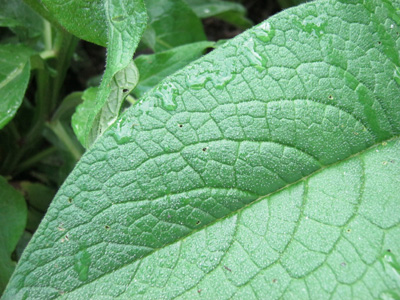
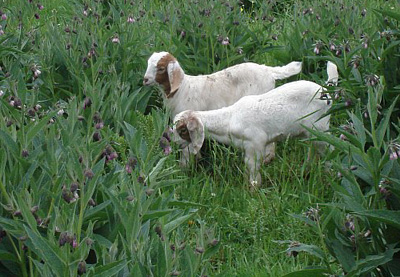
|
Comfrey:
Alkaloids and Livestock
"It should
be added that in recent years there has been some scare talk from official
quarters about pyrrolizidine alkoloids found in comfrey. The alkoloids are
indeed present, and are indeed toxic to the liver in massive, pure doses."
"However, my conclusion from research I have done is that there is no toxicity
problem, acute or chronic, associated with consumption of whole comfrey,
by either humans or livestock. (See 'Comfrey Report', by Lawrence D. Hills.)"
"Whenever I slaughter fowl, I practice a form of divination I call reading
the livers. As long as the livers of birds who have been eating comfrey
remain healthy and free of abcesses, I will have no concerns about feeding
comfrey."
(The Modern Homestead and Backyard Poultry magazine- October/November
2006, www.themodernhomestead.us/article/ Growing-Poultry-Feeds-1.html)
Lawrence Hills was an expert on Russian Comfrey. The book 'Comfrey Report' was written in 1975.
Feed your livestock a variety of greens. As with everything medical, consult your animal care specialist or veterinarian.
|
|
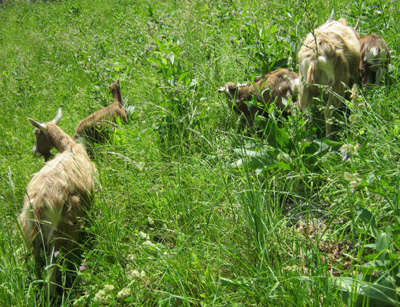
|
Many Types of Pasture Plants Have Alkaloids
Plants in pasture and hay with alkaloids include fescue grass, fiddleneck,
Houndstongue, Tansy Ragwort, Groundsel, jimsonweed, horsenettle, ground
cherry, nightshade, alsike clover, deathcamas, larkspurs, Nebrask lupine,
hemlock, comfrey and others.
The below statement from Cornell University
is about all plants with alkaloids. Comfrey may be safe or the safest of these since it has been fed to animals intentionally for centuries.
Alkaloid
Sensitivity & Symptoms
"There are
livestock species differences in susceptibility to PAs. Horses and cattle
are most commonly poisoned by PAs, while sheep are much more resistant.
Goats are more susceptible than sheep, and pigs are more susceptible than
cattle and horses."
(Cornell University, Medicinal Plants for Livestock, www.ansci.cornell.edu/plants/medicinal/
comf.html)
|
|
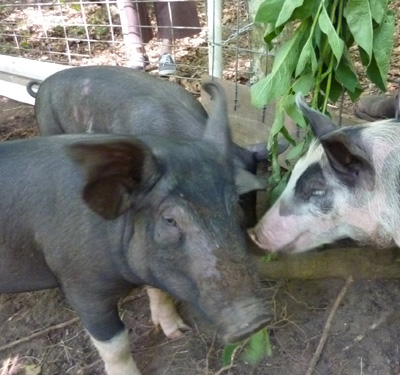 |
Comfrey
is Safe for Farm Animals
"Comfrey
does contain pyrrolizidine alkaloids which have the potential for liver
damage. There have been warnings put out against the use of the herb, but
evidence of incontrovertible documented toxicity is lacking."
"In the book “The Safety of Comfrey,” J.A. Pembery found no reported cases
of pyrrolizidine poisoning from comfrey. Lab tests on rats suggest that
to cause harm to humans, one would have to eat about 20,000 leaves."
(Permaculture Reflections, www.permaculturereflections.com/2009/02/
species-of-month-comfrey.html)
Hogs love comfrey. Feed animals a varied diet.
|
|
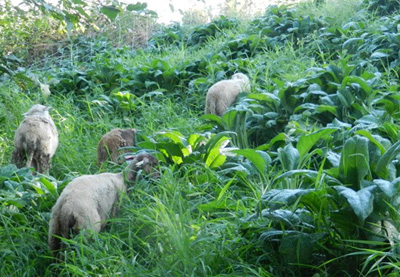 |
Comfrey
Has Been Fed to Livestock for Centuries
"Defenders
of feeding comfrey point out that farmers have been feeding it to livestock
for many, many centuries, and that the tests that concluded that comfrey
causes liver damage were done by overdosing lab rats on far more comfrey
than they ever would have eaten if they were in the wild."
(Homesteading and Permaculture All the Time, www.permies.com/t/10864/plants/
comfrey-questions)
This photo is sheep with comfrey.
|
|
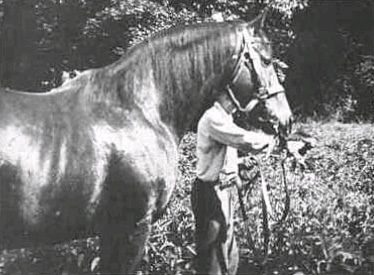
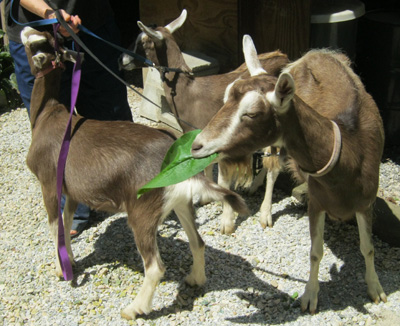 |
No Cases
of Animal Poisoning in Europe
"J. A.
Pembery, B. Sc. (Bachelor of Science), advisor to the Henry Doubleday Research
Association, Essex, U.K. (United Kingdom) says, in the book 'The Safety
of Comfrey', that there appear to be no cases, in medical history or veterinary
records, of humans or animals, showing clinical symptoms, of pyrrolizidine
alkaloid poisoning, from the consumption of comfrey."
"Lawrence D. Hills, in his forward in the book, mentions that the Commonwealth
Bureau of Animal Health very kindly carried out a computer search through
their records of 137,000 cases of stock poisoning by plants, since 1972,
and found only one concerning case: a case of comfrey-nitrate poisoning
in pigs from excessive use of fertilisers in Germany."
(Herbs Are Special, www.herbsarespecial.com.au/ free-herb-information/comfrey.html)
'Safety of Comfrey' was written in 1983. It is 19 pages and was published
by the Henry Doubleday Research Association.
The first photo is Lawrence Hills
with a horse in a comfrey patch. Then a Toggenburg doe with a comfrey leaf in her mouth.
|
|
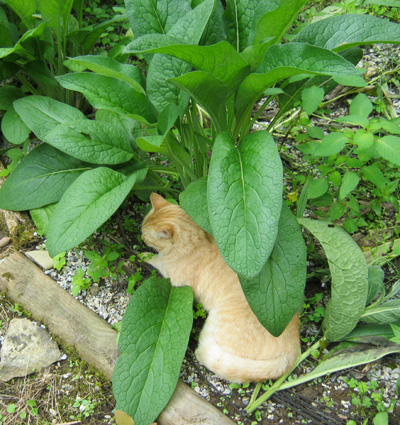 |
Use
Comfrey in Moderation
"I'm leaning
towards giving it to animals in small amounts (not as 50%+ of their diet).
I don't believe it's as bad as some make out, but I do think there's something
there to be aware of, and it's probably not good in large quantities. It's
got to be better than GM (genetically modified, GMO) corn and soybeans,
though :-)."
(The Walden Effect, www.waldeneffect.org/blog/ Feeding_comfrey_to_livestock)
Comfrey can be used medicinally on cats,
dogs and other pets. Consult your veterinarian or animal care specialist.
"I found a Siamese cat that obviously was going
to die, but I decided to try to make her as comfortable as possible. I thought
she had been thrown out of a car. She was raw all over with indications
of internal injuries and could not move on her own. I took leaves from our
Comfrey plant and wrapped the cat in the leaves. I think I was able to get
some of it down her. I kept the leaves on her a week or so, and she healed
completely and was a beautiful happy cat. She had a litter and lived a long
time, all because of the Comfrey." -Robert, Virginia
|
|
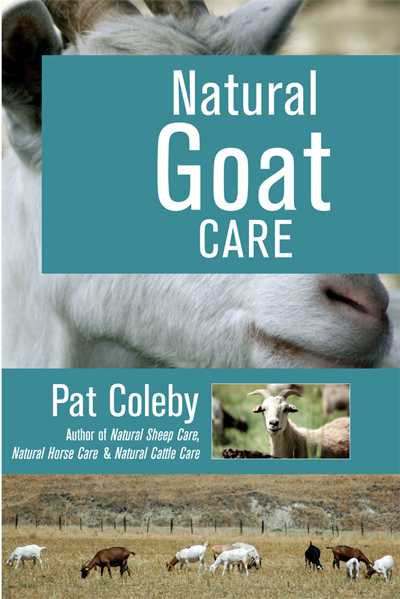 |
Comfrey
is an Important Livestock Medicine
"My personal
opinion is that the new found 'truth' on the harmful effects of comfrey
is just another whitewash by those authority figures who pick and choose
what is the 'bad' herb of the year. Comfrey is unique and has long been
a very important herb in the herbal Materia Medica of most cultures."
"To say that it can be easily replaced by a safer plant is not really understanding
the individual uniqueness of that plant. Most practitioners that find it
easy to drop comfrey and relegate it to topical use, really have no experience
with its clinical oral use."
(Racehorse Alternative Health & Herbal Forums, www. racehorseherbal .com/phpbb/
viewtopic.php ?f=3&t=6)
"Injury: If a vet is unobtainable, after disinfection tidy up torn wounds
as best as you can. Put on a packing of comfrey ointment if possible, otherwise
aloe vera." -'Natural Goat Care' book by Pat Coleby, page 248.
|
|
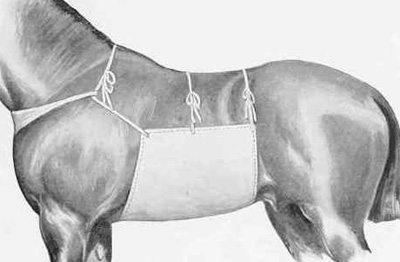
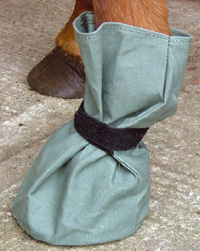
|
Pharmaceutical
Veterinary Drugs
"I wonder
how many of the commonly utilized veterinary drugs that you now use can
stand up to the scrutiny of which comfrey has gone through?"
"I would like
to know how many cases of anaphylactic shock from common anti-biotics have
killed horses. Long sustained use of many compounds can lead to liver damage."
"Comfrey should never be prescribed month after month. Comfrey leaves should
be used topically, and the root should only be the part of choice when taken
internally."
"I will also say that comfrey has been used for years as a livestock forage
with no ill effects. Comfrey is only one of several historically valuable
herbs that have been earmarked for eradication by the FDA and other commissions."
(Racehorse Alternative Health & Herbal Forums, www.racehorseherbal.com/phpbb/
viewtopic.php?f=3&t=6)
These are ways to apply a poultice to a farm animal. Always
consult your practitioner of veterinary medicine.
|
|
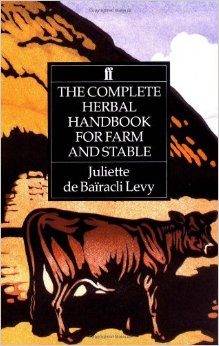
|
Classic
Farm Animal Book Recommends Comfrey for Healing
"Juliette
de Bairacli Levy has proven that veterinary herbal treatments are applicable
to all animals without exception."
"She says it is ironical, that basing their findings on unnatural, unscientific,
and illogical laboratory tests on rats during which massive amounts of herbs
are forced on them, the ruling veterinary body of the United Kingdom is
attempting to ban the use of many long-proven herbs, such as comfrey, sage
and poppy."
(Animal Research Takes Lives: Humans and Animals Both Suffer
book by Bette Overell. Juliette de Bairacli Levy wrote the classic book
'The Complete Herbal Handbook for Farm and Stable', 1952. She uses comfrey
throughout the book.)
|
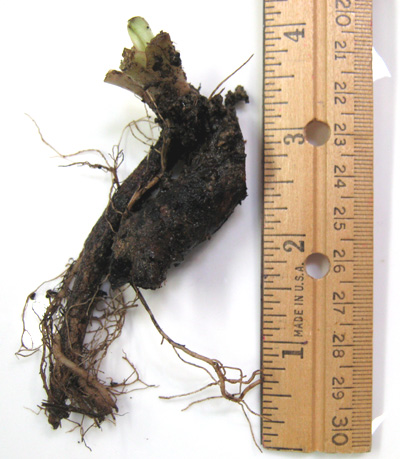
|
Buy Live
Comfrey Roots for Planting
Grow
your own Comfrey: True/Common Comfrey, Russian Bocking #4, Russian Bocking
#14, Symphytum Hidcote Blue.
Your order includes a flyer about how to take care of your plants.
Comfrey
Easy Order Page
|
| |
|












